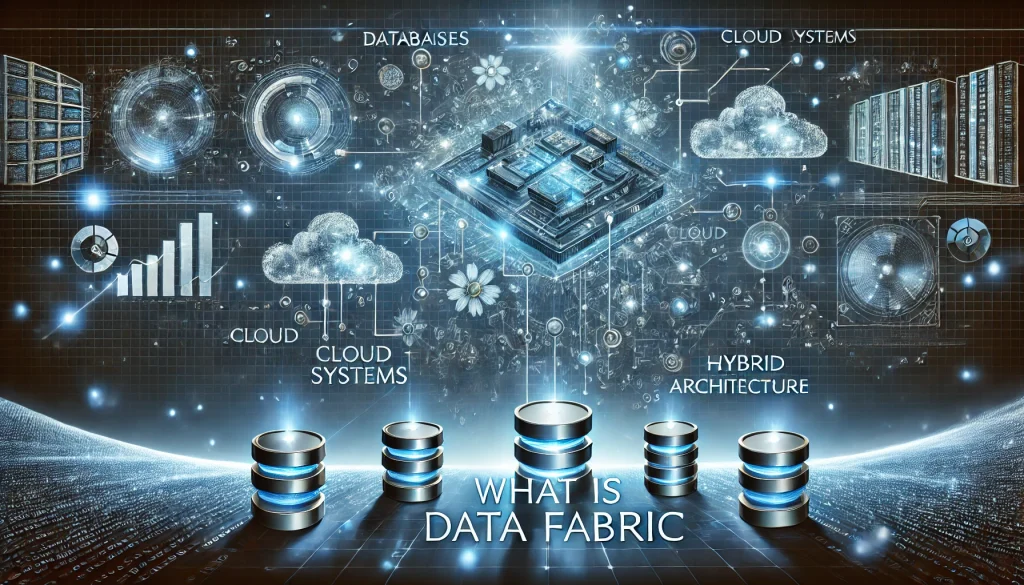
Data Fabric, a game-changing approach to data management, is taking the tech industry by storm in 2024. Designed to streamline complex data integration, it offers organizations a unified view of data across diverse systems. Recent developments in Data Fabric are set to redefine how businesses harness data for innovation, scalability, and efficiency, signaling a significant shift in big data strategies for enterprises and IT professionals.
What Happened
Recent developments in Data Fabric have unveiled new advancements aimed at simplifying data integration. Major tech players, including IBM, SAP, and TIBCO, have introduced robust solutions to enhance seamless data access across hybrid, multi-cloud environments. IBM recently launched its WatsonX.data platform, which leverages its principles to accelerate AI-driven insights. Similarly, SAP has integrated its capabilities into its enterprise resource planning (ERP) systems to enhance real-time decision-making.
Gartner’s latest report predicts that by 2025, over 50% of data management strategies will adopt it to address growing data complexity. Furthermore, TIBCO has released updates to its Connected Intelligence platform, integrating its features that offer end-to-end data governance and lineage tracking. These announcements underline a commitment to solving longstanding issues in data accessibility and accuracy.
When and Where
These breakthroughs in Data Fabric were announced throughout 2024, with notable highlights during global tech events such as IBM Think in Orlando and the SAP Sapphire Conference in Las Vegas. Additionally, key updates from TIBCO and Gartner were shared in recent virtual forums and whitepapers, ensuring a global audience received the news.
Who is Involved
Several prominent companies and thought leaders are driving these innovations. IBM spearheads the push with its WatsonX.data platform, positioning itself as a leader in AI and data fabric technologies. SAP has also played a pivotal role by embedding it into its business systems, while TIBCO’s advancements reflect its commitment to connected intelligence. Gartner analysts, including Rita Sallam, have extensively championed it as the future of enterprise data management, shaping the narrative for businesses worldwide.
Why Data Fabric Matters
The emergence of Data Fabric technologies is critical for businesses aiming to thrive in a data-centric economy. Organizations are increasingly faced with the challenge of managing data spread across multiple platforms, databases, and cloud systems. It provides a holistic framework to integrate, analyze, and manage this data, enabling real-time insights and operational agility.
For industries like healthcare, finance, and retail, the impact is profound. Healthcare providers can leverage it for improved patient care by integrating disparate electronic health records (EHRs). Financial firms can enhance fraud detection and compliance efforts with unified data visibility. Retailers benefit from streamlined supply chain management and personalized customer experiences, driven by accurate and accessible data.
Moreover, the rise of AI and machine learning amplifies the need for high-quality data integration, a core strength of it. By reducing silos and automating workflows, organizations can unlock new possibilities for innovation while lowering operational costs.
Quotes or Statements
IBM’s Data & AI General Manager, Daniel Hernandez, stated, “Data Fabric is not just a technology; it’s a philosophy that ensures data works for businesses rather than against them. With WatsonX.data, we are empowering enterprises to derive value from data like never before.”
Gartner analyst Rita Sallam emphasized, “The adoption of it is no longer optional but essential for organizations looking to remain competitive. It simplifies the complex web of data integration and opens the door to innovation at scale.”
Conclusion
It is poised to redefine how businesses approach data integration and management. With major tech companies like IBM, SAP, and TIBCO leading the charge, organizations now have the tools to navigate a data-intensive future with confidence. These developments promise continued advancements in 2024 and beyond, as it solidifies its role as a cornerstone of modern enterprise technology.
FAQ
What is Data Fabric, and why is it important?
It is an architecture that enables seamless data integration across multiple platforms, clouds, and environments. It is essential because it unifies data access, enhances decision-making, and drives innovation in data-driven industries.
How does Data Fabric support AI and machine learning?
It ensures high-quality data integration, which is critical for training AI and machine learning models. By automating data workflows and reducing silos, it provides the necessary infrastructure for accurate and efficient AI insights.
Which industries benefit most from it?
Industries like healthcare, finance, retail, and manufacturing benefit significantly from Data Fabric. It enhances patient care, fraud detection, customer experience, and supply chain efficiency through improved data accessibility and analysis.
Resources:
- IBM Topics: Explore IBM’s take on Data Fabric solutions
- Gartner Data Analytics: Learn about Data Fabric trends from Gartner.
- TIBCO Glossary: Understand the basics of Data Fabric.
- SAP Resources: Discover how SAP implements Data Fabric.
- Spiceworks: A detailed guide to Data Fabric applications.
